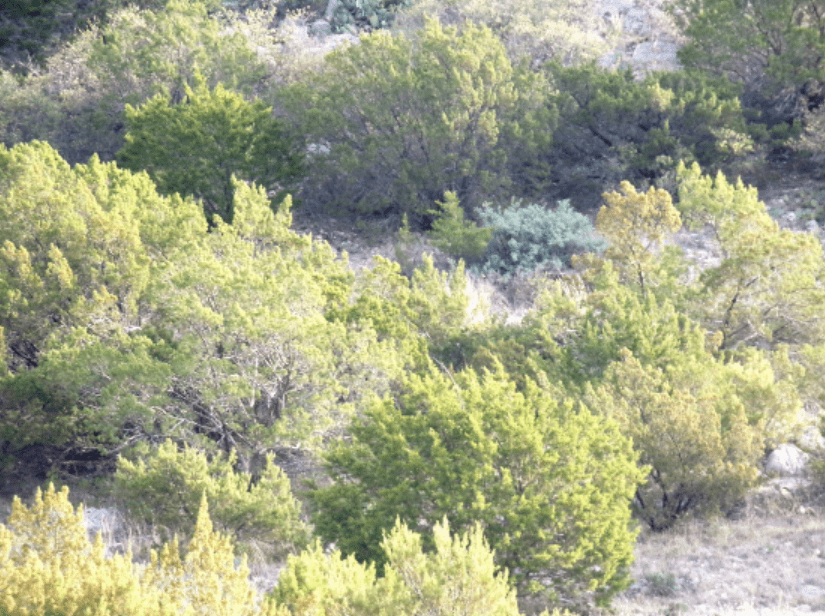
Sitting on the back porch this morning, we watched the cedar trees start what we now know is an annual show. The ones that have turned brown are not sick or tired, they are brown with pollen, and are about to release great puffs of the stuff that fill up the air like tiny mushroom clouds. They don’t go all at once. They seem to take turns, like an amateur class of grade school tuba players. I have never seen anything like it. I don’t know why they all do this on the same day, almost like it’s part of a plan, but they do, and here at least, today is the day.
So like a choreographed comedy, each fat, squat little player adds in a belching puff, and the sky is full of potent pollen that will make some of us miserable for weeks. The allergies to cedar in Texas are so widespread, they have their own condition called cedar fever. Cedar fever is not a virus, but it can actually cause some sufferers to run a fever. Get a sore throat. Have a runny nose. Cough endlessly.
Texas A&M Today published an article on cedar fever that explains why it’s so prevalent in Central Texas. One reason, they say, is because we have so many cedars. Well yes. “Cedar fever is the worst west of I-35, where you have primarily juniper mixed in with oaks and some other species,” said Jonathan Motsinger, Texas A&M Forest Service Central Texas Operations department head. “And because all of those junipers are producing pollen at the same time, you’re going to get a higher concentration of pollen in the air.”
“Immediately before and after a cold front, it gets very dry and windy and the pressure changes very rapidly,” Flocke said. “This triggers the opening of pollen cones and the release of the pollen grains. When you see the pollen billowing off a tree that has just ‘popped,’ or opened its cones, it looks very similar to smoke coming from a wildfire.”
It’s not actually right after a cold front. A week or so really, and not that cold of a front. While the experts say the trees release in mid December, we’re watching them do it now. I don’t think they are worried if their timing is off.
My husband has bad cedar allergies. I try to do everything possible to control them. I make him take curcumin capsules. I run the AC even if it’s not hot. I put water on the stove with a little cinnamon to help the airways. Run the humidifier. Run an air cleaner. It seems though that whatever you do, the allergies from this stuff are probably going to get you, if you’re susceptible.
Bad as the allergens are, it is still fun to watch the cedar trees this fall. We sit outside and count coup on them, remarking on each release, comparing big ones and little ones, wondering. Emerson wrote” Every particular in nature, a leaf, a crystal, a moment in time is related to the whole, and partakes of the perfection of the whole.” There is, to me, some deep perfection in the cedar display. In the timing. In the way a cloud forms over each tree, then trails away in the wind.
I keep trying to get a picture of one, but it happens faster than I can get my camera aimed. We can see the whole phenomenon clearly because the cedars grow all over the hill behind our house. In the morning light, with the hill as a background, you can watch the clouds of pollen form over each one, slowly expand, then waft away, probably heading straight into your nose.
***
Diane Adams is a local journalist whose columns and articles appear periodically on BrownwoodNews.com
